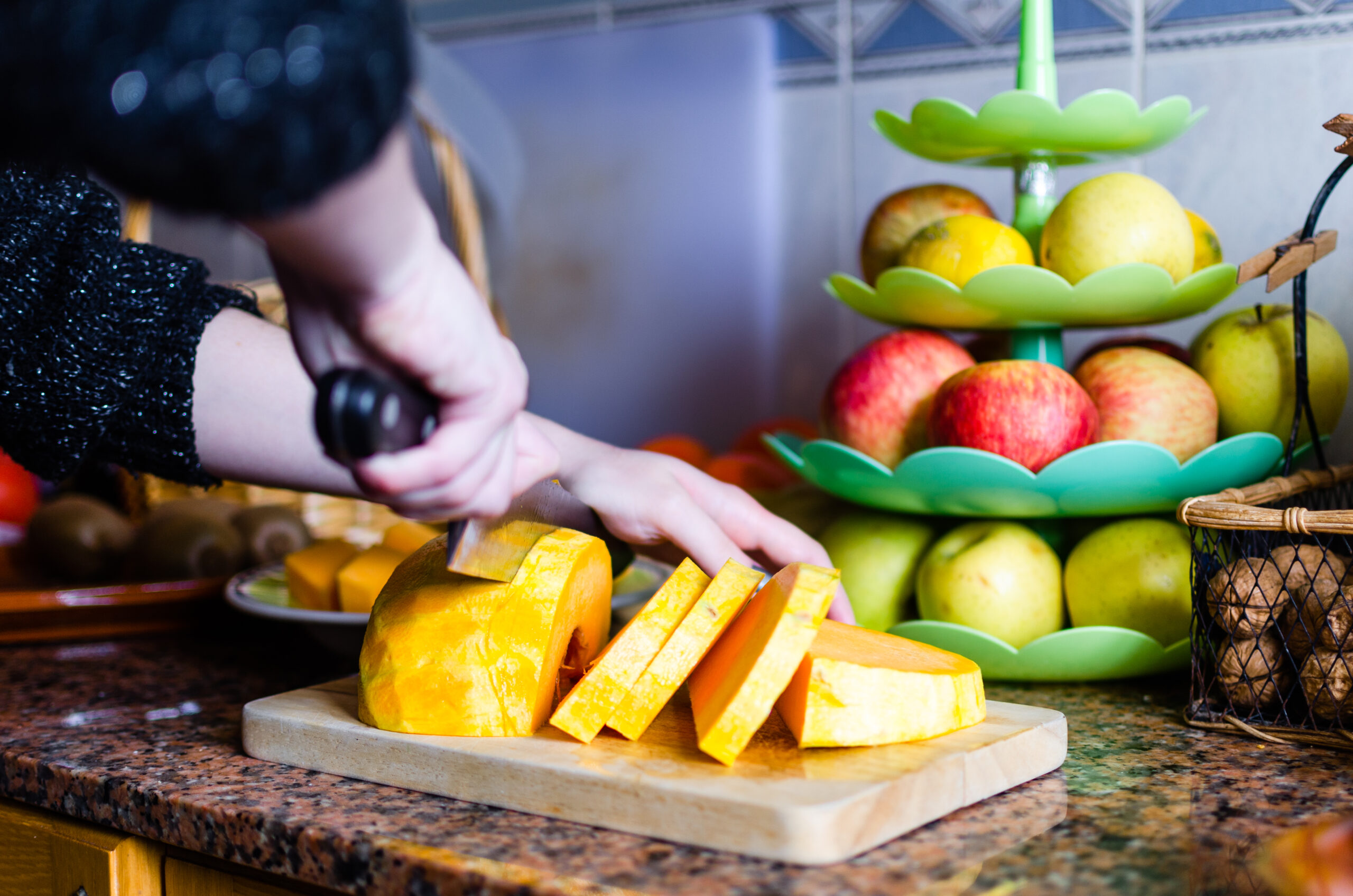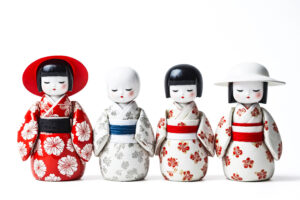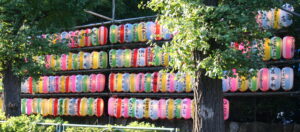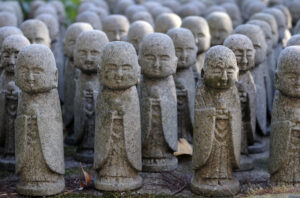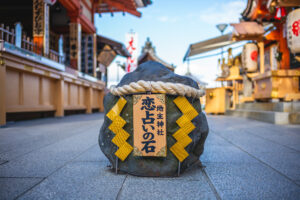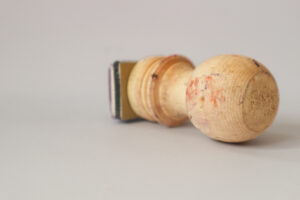Seki City, nestled in the Gifu Prefecture of Japan, is a storied hub of craftsmanship known for its remarkable tradition of cutlery production. The district’s rich heritage dates back over 800 years and is deeply intertwined with Japan’s cultural identity. Seki cutlery symbolizes the fusion of artistry and practicality, a testament to the enduring legacy of Japanese knife-making. As we explore the various facets of Seki cutlery, from its historical roots to modern innovations, we uncover a narrative enriched by tradition, skill, and growing global influence.
The Rich History of Seki Cutlery in Japan’s Heritage
The origins of Seki cutlery can be traced back to the Kamakura period (1185–1333), when the area became known for sword-making. The high-quality steel and skilled artisans attracted samurai and nobility, laying the foundation for Seki’s reputation as a center of metalworking. By the Edo period (1603-1868), the craftsmanship evolved to produce not only swords but also everyday items such as knives, scissors, and tools. This shift marked a significant change as artisans began to cater to broader markets while maintaining their commitment to quality.
The city’s landscape is dotted with workshops that have been passed down through generations, each contributing to the legacy of Seki cutlery. The skills and techniques refined over centuries are integral to the identity of Seki artisans. The art of cutlery-making in Seki is a microcosm of Japan’s broader cultural values, reflecting the principles of harmony, precision, and dedication. As a result, Seki cutlery is not just a craft; it is a way of life that embodies the spirit of the region.
Throughout its history, Seki has also served as a melting pot for different metalworking techniques from various parts of Japan, enhancing its cutlery craftsmanship. The influx of ideas and practices led to a unique synthesis that distinguished Seki cutlery from other regions. The establishment of a formal guild system in the late Edo period further solidified its status, fostering collaboration and innovation among artisans and ensuring the transmission of skills to future generations.
The historical significance of Seki cutlery is not only evident in its production but also in its representation of Japanese culture and aesthetics. The cultural practices surrounding knife-making are deeply respected, with many artisans viewing their work as a form of artistic expression. The intertwining of history, culture, and craftsmanship has made Seki cutlery a cherished aspect of Japan’s heritage, appealing to both domestic and international markets.
In contemporary Japan, the legacy of Seki cutlery continues to thrive. Modern artisans honor traditional techniques while also embracing innovation in design and functionality. This balance of old and new is what keeps Seki cutlery relevant in today’s culinary world. As global interest in Japanese cuisine grows, so does the appreciation for the knives that prepare these dishes, reinforcing Seki’s position on the culinary map.
Today, Seki City is recognized not only for its cutlery but also as a center of cultural tourism, drawing visitors eager to learn about the art of knife-making. The rich history of Seki cutlery serves as a reminder of the enduring nature of craftsmanship, where timeless traditions meet modern demands, reflecting the evolution of both the craft and the culture.
Craftsmanship: The Heart of Seki Knife Manufacturing
At the core of Seki cutlery is a commitment to craftsmanship that embodies Japan’s dedication to quality and excellence. Each knife is the product of meticulous attention to detail, showcasing the skill and expertise of the artisans involved in its creation. The craftsmanship is not merely a process but an art form, where each blade is forged, ground, sharpened, and finished through a combination of traditional methods and modern techniques.
Artisans are often involved in every stage of production, ensuring that each knife meets high standards. This hands-on approach allows for a level of precision that is often unmatched in mass-produced alternatives. Each craftsman brings his or her unique touch to the process, resulting in knives that are not only functional but also aesthetically pleasing. This individual artistry is what makes Seki cutlery truly special.
The relationship between artisans and their tools also plays a vital role in Seki’s knife-making heritage. Many craftsmen have their favorite hammers, anvils, and whetstones that they use throughout their careers. This personal connection to their tools fosters a deep understanding of the materials and techniques, allowing artisans to imbue their blades with a level of care and attention that reflects their passion for the craft.
In addition to individual craftsmanship, there is a strong sense of community among Seki’s artisans. Many craftsmen share techniques, insights, and innovations with their peers, fostering a collaborative environment. This spirit of camaraderie not only enhances the quality of the knives produced but also strengthens the cultural ties that bind the artisans to their craft. The result is a collective legacy that transcends individual contributions.
The meticulous craftsmanship involved in Seki knife manufacturing is also evident in the finishing process, where artisans spend hours polishing and perfecting each knife. This final stage is crucial, as it not only enhances the knife’s visual appeal but also its functionality. A well-crafted knife is expected to maintain its sharpness and durability, qualities that are hallmarks of Seki cutlery.
Ultimately, craftsmanship in Seki knife manufacturing is about more than just producing high-quality blades. It is about preserving a tradition, passing down knowledge, and celebrating the artistry that has defined Seki cutlery for centuries. This dedication to craftsmanship ensures that each knife is not only a tool but also a piece of history, reflecting the enduring legacy of Japanese knife-making.
Traditional Techniques: Honing Japanese Knife-Making Skills
The traditional techniques employed in Seki knife-making are a reflection of the region’s rich history and its artisans’ dedication to their craft. One of the most significant methods is the use of differential hardening, a process that creates a blade with both a hard edge and a softer spine. This technique, which has been refined over generations, allows for a knife that holds a sharp edge while also providing flexibility, making it ideal for various cutting tasks.
Another essential aspect of traditional Seki knife-making is the art of forging. This process involves heating steel to high temperatures and shaping it through hammering. The skill required to forge a blade is immense, as artisans must possess not only strength but also a keen sense of timing and pressure. The forging process is often accompanied by rhythmic hammering, a sound that resonates throughout the workshops of Seki.
The skill of sharpening is also crucial in traditional Seki knife-making. Artisans use a series of whetstones with varying grits to achieve the desired sharpness and finish. This labor-intensive process requires a deep understanding of both the blade’s geometry and the characteristics of the steel. A properly sharpened knife not only enhances performance but also reflects the artisan’s pride in their work.
Additionally, Seki artisans often employ a technique called "kasumi," where the blade is clad in a softer steel to form a protective layer around a core of harder steel. This method not only provides durability but also influences the knife’s performance, making it easier to maintain and resharpen. The kasumi technique is a prime example of how traditional methods continue to inform contemporary practices in Seki workshops.
Caring for these knives is also rooted in tradition. Seki artisans stress the importance of proper maintenance, from regular sharpening to appropriate cleaning techniques. These practices ensure that the knives remain functional and beautiful for generations, an ethos that aligns with the Japanese philosophy of valuing craftsmanship and longevity.
The commitment to traditional techniques in Seki knife-making is a testament to the artisans’ desire to honor their heritage while also adapting to modern needs. By refining age-old methods and integrating new approaches, Seki craftsmen uphold the cultural significance of their craft while ensuring its relevance in today’s culinary landscape. This dedication to preserving traditional skills encapsulates the essence of Seki cutlery and its timeless appeal.
Materials Matter: Steel Choices in Seki Cutlery Production
The choice of materials is paramount in the production of Seki cutlery, particularly when it comes to steel. The artisans of Seki favor high-carbon steels for their ability to achieve a fine edge and maintain sharpness. Among the most popular choices is Aogami (Blue Paper Steel), known for its exceptional hardness and edge retention. This type of steel is often preferred by professional chefs who demand precision in their tools.
Another commonly used material is Shirogami (White Paper Steel), which is prized for its ease of sharpening and ability to take on a razor-sharp edge. Shirogami steel is often used in traditional Japanese knives that require a sharp, precise cutting edge. Its relatively low alloy composition allows for easier sharpening but may require more frequent maintenance compared to higher alloy steels.
In addition to high-carbon steels, Seki artisans also experiment with various stainless steels. While traditionalists often favor carbon steels, stainless variants like VG-10 and AUS-10 have gained popularity due to their corrosion resistance and durability. These modern steels offer a balance between maintaining sharpness and providing ease of care, appealing to a broader audience, including home cooks and culinary enthusiasts.
The selection of steel is not merely a technical consideration but also reflects the philosophy that underpins Seki knife-making. The artisans believe that the choice of materials significantly impacts the knife’s performance and longevity. As a result, much thought goes into sourcing the best steel, often from reputable suppliers who share the artisans’ commitment to quality.
Moreover, the treatment of steel is equally critical in Seki cutlery production. Techniques such as hardening and tempering are meticulously applied to enhance the material’s properties. By adjusting the heat treatment process, artisans can tailor the steel’s hardness and flexibility to meet specific cutting needs. This level of customization is a hallmark of Seki craftsmanship, allowing each knife to perform optimally in its intended application.
Ultimately, the emphasis on quality materials in Seki cutlery production reinforces the artisans’ dedication to their craft. By carefully selecting and treating steel, Seki craftsmen create knives that not only excel in performance but also embody the spirit of Japanese craftsmanship. The importance placed on materials ensures that Seki cutlery remains a respected choice for chefs and collectors alike, solidifying its legacy in the world of culinary tools.
The Role of Modern Technology in Seki Knife Creation
As the world evolves, so does the craft of knife-making in Seki. While traditional techniques remain at the heart of Seki cutlery, modern technology has introduced new methodologies that enhance production efficiency and precision. Advanced machinery complements the artisans’ skills, allowing for greater consistency in blade quality while reducing the time required for manufacturing.
One of the most notable advancements is the use of computer numerical control (CNC) machines. These machines allow for precise cutting and shaping of steel, ensuring that each blade is uniform in size and geometry. The incorporation of CNC technology does not diminish the artisan’s role; rather, it enables craftsmen to focus on the more intricate aspects of knife-making, such as forging and finishing, where human skill is paramount.
Laser cutting technology has also made an impact on Seki knife production. This method allows artisans to create intricate patterns and designs on the blade, enhancing the aesthetic appeal without compromising the knife’s integrity. The combination of artistry and technology results in knives that are not only functional but also visually stunning, appealing to collectors and culinary enthusiasts alike.
Despite these technological advancements, Seki artisans remain committed to traditional values. The integration of modern tools is approached with caution and respect for the craft. Artisans strive to maintain the balance between tradition and innovation, ensuring that the essence of Seki cutlery is preserved even as production methods evolve. This synergy between old and new reflects the adaptability ingrained in Japanese craftsmanship.
Moreover, the adoption of new technologies has paved the way for greater accessibility to Seki cutlery. With improved production processes, artisans can produce a wider variety of knives that cater to diverse culinary needs. This accessibility has contributed to the growing popularity of Seki knives both in Japan and abroad, fostering a greater appreciation for Japanese knife-making culture.
In conclusion, modern technology plays an integral role in the evolution of Seki cutlery while honoring its traditional roots. By embracing innovation without sacrificing craftsmanship, Seki artisans continue to produce knives that embody the highest standards of quality. The harmonious blend of old and new ensures that Seki cutlery remains a benchmark for excellence in the culinary world, appealing to both seasoned chefs and aspiring cooks.
Distinctive Features: What Sets Seki Knives Apart
Seki cutlery is distinguished by several unique features that set it apart from knives produced in other regions. One of the most notable aspects is the quality of craftsmanship that goes into every blade. Seki knives are often handmade, with artisans investing countless hours into perfecting each piece. This commitment to quality is evident in the way the knives feel in hand and perform during use, providing an unmatched cutting experience.
Another characteristic that defines Seki knives is their blade geometry. The profiles of Seki knives are specifically designed to enhance performance for various culinary tasks. Whether it’s for slicing, dicing, or chopping, each knife is crafted with a particular function in mind. The careful consideration of blade shape, thickness, and weight results in tools that are not only efficient but also comfortable to use over extended periods.
The aesthetics of Seki knives also play a significant role in their appeal. The combination of high-quality steel and traditional finishing techniques creates blades with a distinct beauty. Many Seki knives feature unique patterns that emerge from techniques such as Damascus folding, giving each knife a one-of-a-kind appearance. This visual allure makes Seki cutlery not just a tool but a work of art that is often displayed as much as it is used.
In addition, the attention to detail in the handle design sets Seki knives apart. Artisans often use materials such as wood, resin, or even composite materials to create handles that are ergonomic and visually appealing. The choice of handle design reflects the artisan’s philosophy, ensuring that each knife not only performs well but also feels balanced and comfortable in the hand.
Seki knives are also renowned for their durability and edge retention. The combination of high-quality steel and meticulous heat treatment results in blades that can withstand repeated use without losing their sharpness. This durability is a significant factor in the knives’ popularity among professional chefs who rely on consistent performance in high-pressure kitchen environments.
Lastly, the legacy and cultural significance surrounding Seki cutlery add to its distinctive features. Owning a Seki knife is often seen as possessing a piece of Japanese heritage, making the knives highly sought after by collectors and culinary enthusiasts alike. The stories behind each knife and the artisans who craft them enhance their value, creating a connection that transcends the mere function of the tool.
In summary, the distinctive features of Seki cutlery, from its exceptional craftsmanship to its unique aesthetics and cultural significance, set it apart in the world of culinary tools. These elements contribute to the enduring appeal of Seki knives, ensuring their place as a benchmark for quality and artistry in knife-making.
Seki Cutlery’s Influence on Culinary Arts Worldwide
Seki cutlery has made a profound impact on the culinary arts, influencing chefs and home cooks around the globe. The high-quality knives produced in this region are often seen as essential tools in the professional kitchen, where precision and performance are paramount. As culinary traditions blend and evolve, the reputation of Seki cutlery has grown, leading to an increased appreciation for Japanese knife-making techniques worldwide.
The influence of Seki cutlery can be seen in the rising popularity of Japanese cuisine outside of Japan. As chefs strive to create authentic dining experiences, the tools they use become integral to their craft. The sharpness and balance of Seki knives allow for more intricate preparations, making them a favorite among culinary professionals seeking to elevate their presentations and enhance flavors.
Moreover, the global culinary community has recognized the importance of using the right tools for specific tasks. Seki knives are designed with various cutting techniques in mind, allowing chefs to select the perfect knife for their needs. This attention to detail in design has led to a broader understanding of the relationship between tools and technique, fostering a culture of respect for craftsmanship and quality in cooking.
Social media and culinary shows have further amplified the influence of Seki cutlery. As chefs showcase their skills and highlight the tools of their trade, Seki knives frequently appear as symbols of quality and craftsmanship. This visibility has sparked interest among home cooks, inspiring many to invest in high-quality knives that reflect the ethos of Japanese knife-making.
In addition to professional kitchens, Seki cutlery has also gained traction in the home cooking scene. As culinary enthusiasts seek to replicate restaurant-quality dishes at home, the demand for Seki knives has surged. Online platforms and specialty retailers have made it easier for consumers to access these high-quality tools, contributing to a growing appreciation for Japanese knife craftsmanship among everyday cooks.
The influence of Seki cutlery extends beyond its physical presence in kitchens. The philosophy behind Japanese knife-making—emphasizing attention to detail, respect for materials, and the importance of maintaining tools—has resonated with chefs and enthusiasts alike. This cultural exchange has fostered a greater understanding of culinary practices and has encouraged a deeper appreciation for the artistry involved in food preparation.
In conclusion, Seki cutlery’s influence on the culinary arts is multifaceted, spanning professional kitchens to home cooking enthusiasts. Its reputation for quality, performance, and artistry has made it a cornerstone of contemporary culinary practices, reinforcing the enduring legacy of Japanese knife-making in the global culinary landscape.
The Art of Forging: A Look Inside Seki Workshops
Stepping into one of Seki’s bustling workshops is akin to entering a world where tradition and skill converge to create extraordinary knives. The atmosphere is charged with the rhythmic sounds of hammering, the hiss of metal meeting water, and the scent of heated steel. Each workshop has its unique character, influenced by the artisan’s personal style and philosophy, yet all share a commitment to quality and craftsmanship.
At the heart of the forging process is the artisan, who transforms raw materials into finely crafted tools. The art of hammering steel requires not only physical strength but also a keen sense of timing and pressure. Artisans must carefully control the temperature of the steel to ensure optimal malleability, striking a balance between forging and maintaining the integrity of the material. This level of precision showcases the deep understanding artisans have of their craft.
As the blade takes shape, the artisan’s focus shifts to achieving the desired geometry and balance. The process often involves multiple heating and hammering cycles, with artisans employing various hammers and anvils to create specific profiles. Each strike is intentional, and the artisan’s experience guides their movements, resulting in blades that reflect both technical skill and artistic expression.
Once the blade is forged, the next step involves refining its surface and sharpening the edge. This stage requires meticulous attention to detail, as artisans grind and polish the blade to achieve a flawless finish. The use of water stones for sharpening is a traditional practice that further enhances the blade’s sharpness and durability. The combination of skillful forging and careful finishing ensures that every Seki knife is a testament to the artisan’s dedication to their craft.
The workshops are also a place of collaboration and learning, where experienced artisans pass down their knowledge to the next generation. Apprentices often spend years honing their skills under the guidance of seasoned craftsmen, absorbing the intricacies of the trade. This mentorship is vital in preserving the traditional practices that define Seki cutlery, fostering a sense of community and shared purpose among artisans.
In addition to the craftsmanship involved, the workshops often serve as a cultural hub, where artisans engage with customers and share the stories behind their creations. Many artisans take pride in explaining their techniques and the materials used in their knives, further enriching the connection between the craftsman and the consumer. This personal touch enhances the value of Seki cutlery, making each knife not just a tool but a piece of art steeped in history.
In conclusion, the art of forging in Seki workshops is a captivating process that embodies the dedication, skill, and cultural significance of Japanese knife-making. The combination of traditional techniques, personal
